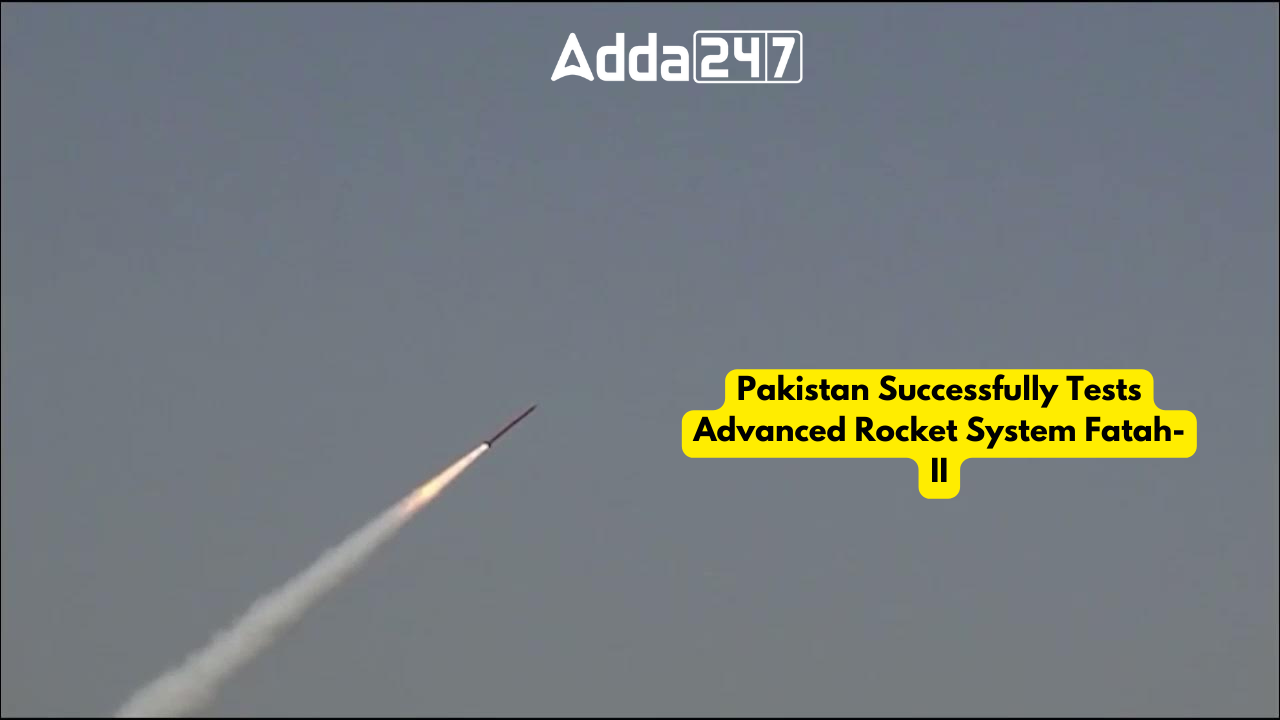Islamabad, Pakistan: Pakistan’s military successfully conducted a flight test of the indigenously developed guided multi-launch rocket system Fatah-II , showcasing a significant advancement in its missile capabilities. The system boasts a 400-kilometer range and advanced features, marking a major milestone for the country’s defense program.
Key Highlights of the Fatah-II System:
- Extended Range: With a 400-kilometer range, Fatah-II significantly expands Pakistan’s strike capabilities compared to the previous Fatah-1 system (250 kilometers). This enhances strategic deterrence and provides greater operational flexibility.
- Precision Targeting: The system features “state-of-the-art avionics, sophisticated navigation system, and unique flight trajectory,” according to the Inter-Services Public Relations (ISPR), ensuring high accuracy in hitting designated targets.
- Indigenous Development: The successful test underlines Pakistan’s growing self-reliance in defense technology. Fatah-II represents the culmination of years of research and development by Pakistani scientists and engineers.
Context and Implications
- This comes on the heels of Pakistan’s recent test-launches of other weapons systems, including the Ghauri and Ababeel missiles, demonstrating a renewed focus on modernizing its arsenal.
- The advancement raises concerns about regional arms race and potential instability, while Pakistan maintains that its focus remains on strengthening its defensive capabilities.
- International reactions are yet to emerge, but the development is likely to be closely monitored by neighboring countries and global powers.
Further Details and Developments
- ISPR provided limited details about the specific technical specifications and operational deployment plans for Fatah-II.
- Future tests and official statements are expected to offer more insights into the system’s capabilities and intended role in Pakistan’s defense strategy.
Important Questions Related to Exams
Q1: What is Fatah-II?
Ans. Fatah-II is a guided multi-launch rocket system (MLRS) developed by Pakistan. It is capable of engaging targets with high precision at a range of up to 400 kilometers.
Q2: How does it compare to Fatah-I?
Ans. Fatah-II has a significantly longer range than its predecessor, Fatah-I, which could reach 250 kilometers. This gives Pakistan increased strike capability and operational flexibility.
Q3: What are the main features of Fatah-II?
Ans. Fatah-II boasts state-of-the-art avionics, sophisticated navigation systems, and a unique flight trajectory. This allows for highly accurate targeting of designated targets.
Q4: Why did Pakistan develop Fatah-II?
Ans. Pakistan claims the system is for defensive purposes and aims to strengthen its deterrent capabilities. However, it also raises concerns about potential regional arms races and instability.
Q5: What are the potential implications of Fatah-II?
Ans. The development of Fatah-II is likely to be closely monitored by neighboring countries and global powers. Its impact on regional security and arms control efforts remains to be seen.




 Andrej Babis Sworn In as Czech Republic’...
Andrej Babis Sworn In as Czech Republic’...
 Lithuania Declares State of Emergency Ov...
Lithuania Declares State of Emergency Ov...
 Operation Sagar Bandhu — Indian Navy Sen...
Operation Sagar Bandhu — Indian Navy Sen...







